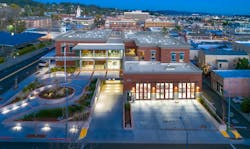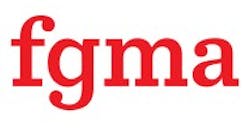Drawing sketches on paper is the easiest part of building a new firehouse. After that, the research begins, including looking at nearby new fire stations or consulting November issues of Firehouse Magazine to pore over dozens projects that were recognized by our Station Design Award judges.
Speaking with city officials can become a little tense—“Why do you need a new station?”—and the friction can escalate when money is mentioned. You start to talk with architects or construction firms, and the drawings get a little more serious. The process continues. Setbacks start to come at you—increasing costs, site evaluations, environmental surprises, neighborhood resistance. Before you know it, building your new station isn’t much fun anymore; it’s a massive pain the rear.
Attending the seventh annual Station Design Conference, May 24–26, 2022, might not keep your project all fun, but it can help to prevent some headaches. The conference offers 52 targeted presentations by experienced end-users and architects who specialize in public safety facilities.
Whether you’re a first-time or a seasoned builder, the information can help for a new fire station, a combined public safety facility, a standalone EMS facility or an emergency operations center.
On paper
“Building a Strong Foundation: Program Basics,” by Lynn Reda of Hughes Group Architects, is a great presentation from which to learn programming. In architect-speak, a program is the framing, or an overview, of how inhabitants will engage within the architectural space, tracking the flow from one space to the next. Reda will explain how a space can co-perform its function with people and with the work that’s to be done within the building.
Those who attend “How to Read a Blueprint,” which will be presented by Brett Hanson and Jeff Humphreys of Mackenzie, will learn how to read and decipher each page (paper or digital) of the stack of complex diagrams that will be your facility.
Costs & codes
The past two years wreaked havoc on all building construction. A Michigan fire chief recently related how construction costs for his department’s new station swelled to more than $1 million over budget because of increased costs of steel and overhead doors and the departure of his contractor.
Henry Pittner of BKV Group will offer insights on budgets in “The Other Bucket: Managing Total Project Costs.” Although “hard” costs—e.g., foundations, walls, floors, electrical—are easy to recognize, “soft” costs, which include insurance, professional fees and taxes, can be more difficult to wrap one’s mind around. Pittner will give you a good understanding of how to plan for the most common soft costs.
Another important part of the construction process for public safety facilities is the awareness of building codes, standards and accessibility in regard to the Americans with Disabilities Act. Does your station need to be ADA-compliant? Does your two-story station require an elevator?
“Applying Building and Accessibility Codes to Fire and Police Facilities: The Good, The Bad and The Gray” is the focus of the presentation by Forest Hooker of TCA architecture + planning and Brian Berryhill of Roth Sheppard Architects. They will explain authorities having jurisdiction (AHJ) at federal, state and local levels as well as new NFPA standards that apply to public safety facilities, the cost of noncompliance and Department of Justice guides.
With many new material options on the market, “All You Need to Know on Materials,” by Jason Estes and Raegan Porter of FGM Architects, will offer the opportunity to touch and feel new building materials and will provide the pros and cons of each product.
Once a new station project starts to progress, a department’s older stations could look even more out of date and be judged as inefficient. You next might be asked to take on an older station that needs upgrades and a new look. “How to Breathe Life into an Old Station,” by Michael L. Scott of RRM Design Group, will reflect on completed projects to show how to upgrade a station’s systems and improve layouts. Scott also will share how to save time and to control renovation costs and pricey change orders.
Shared facilities
The recent Station Design Awards and Law Enforcement Design Awards as well as discussions with city managers indicate an increase in shared and combined facilities. Significant financial savings in one location, a single construction site and shared common areas appeal in tightened budgets.
Several of the presentations mentioned above are applicable to shared facilities. In addition, specific programs include “How to Plan and Design a Successful Shared Public Safety Facility,” by James Stumbo of Stewart-Cooper-Newell Architects, and a “Case Study: Fridley Public Safety Facility—A Co-Located Station,” by Mike Healy and Craig Carter of BKV Group.
Bill Nye The Science Guy said, “Everyone you will ever meet knows something you don’t.” The Station Design Conference teems with resources for you/your project.
2022 Station Design Conference • May 24–26, 2022 • Crowne Plaza, Rosemont, IL • fhstationdesign.com
Firehouse Staff
Content written and created by Firehouse Magazine editors.







